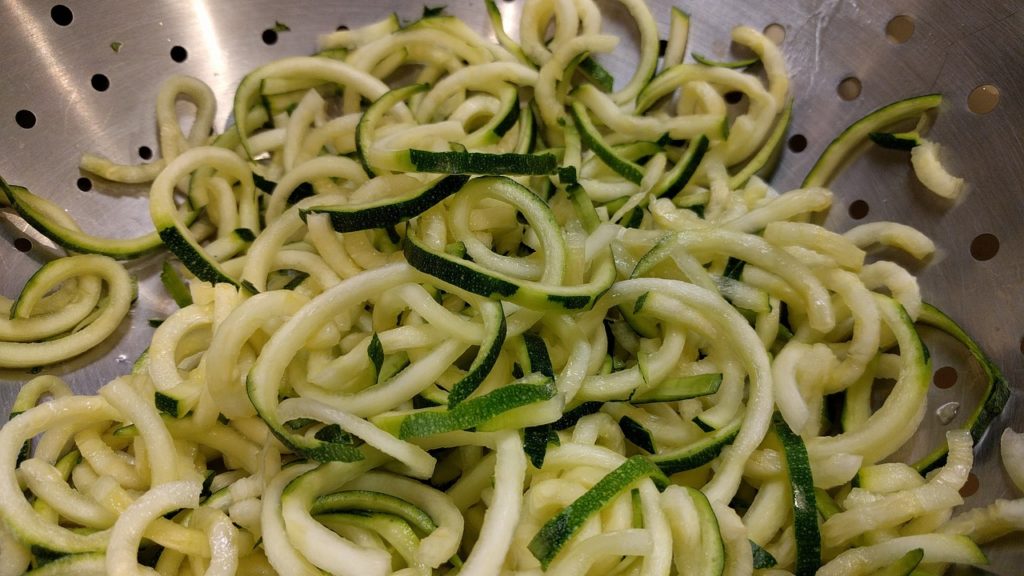Regular pasta is frequently prepared with refined wheat flour. However, this method can remove part of the wheat’s fibre, vitamins, and minerals, leaving the noodles with little nutritious value. Wouldn’t it be wonderful to let your kids eat all their favourite pasta recipes while still getting their recommended daily protein intake, vitamins, and minerals?
Worry not! We understand this predicament and have a curated list of healthy pasta substitutes that are just as delicious and healthy. Read on to learn more about these alternatives.
“Zoodles” Or Zucchini Noodles.
Saturated fat, salt, and cholesterol levels are relatively low in zucchini. It is a fantastic source of protein, dietary fibre, vitamins A, thiamin, niacin, phosphorus, copper, and vitamins C, K, riboflavin, folic acid, magnesium, potassium, and manganese. Zoodles have the same flavour as al dente spaghetti when fully cooked. They can be used in place of genuine noodles in spaghetti by boiling them in the pasta sauce instead. The simplest way to prepare zoodles is with a vegetable spiraliser. Simply slice off the ends of the zucchini, put it next to the blade, and spin. The entire zucchini will be spiral-sliced in less than 8 seconds.
Quinoa Pasta.
Quinoa has many nutrients, including minerals, iron, B vitamins, magnesium, calcium and fibre. It is also naturally gluten-free. Due to its presence of all nine essential amino acids, it is one of the few plant foods regarded as a complete protein. This makes quinoa pasta a great alternative to traditional wheat pasta for those looking for a gluten-free option or wanting to add more protein to their diet. Quinoa pasta has a nutty, earthy flavour and a firm texture that holds well in sauces and stir-fries. It also cooks quickly and is easy to digest. Whether you are a vegan, gluten-free, or just looking to add more whole grains to your diet, quinoa pasta is a delicious and nutritious option to incorporate into your meals.
Rice Pasta
The second most popular rice product in Asia, after rice, is rice noodles. Regular pasta has more nutrients than rice noodles. However, rice noodles have the advantage of not having gluten. Rice noodles are the best option if you or your children are gluten-sensitive or have Celiac disease but yearn for those classic pasta meals. Because it contains simple carbs, rice noodles are simpler to digest.
Millet Pasta
Many restaurants have also started offering millets with an exciting twist, such as millet pasta and millet porridge, appealing to children and adults looking to make healthy changes. Millets are an excellent replacement for carbs like rice and wheat. Boiled millet can also be added to salads. Millet pasta has a slightly sweet, nutty flavour and a slightly crunchy texture, making it a unique alternative to traditional wheat pasta. It is also quick and easy to cook, making it a convenient option for busy weeknights. You can try millet pasta from SlurrpFarm for a quick and easy meal at any time of the day. This pasta is entirely free from preservatives and artificial flavours, making it both healthy and tasty.
Multigrain Pasta
Multigrain pasta is made with different grains such as wheat, corn, barley, and oat. It is a healthier alternative to traditional pasta made with only wheat flour. Different grains give the pasta a unique texture and provide a source of additional nutrients such as fibre and protein. Multigrain pasta is also often fortified with extra vitamins and minerals, making it a nutritious addition to any meal. It can be used in various recipes, from pasta salads to baked casseroles, and can be paired with a wide range of sauces, from tomato to pesto. You can easily grab multigrain pasta at online stores such as SlurrpFarm. It is available in Fusilli and Macroni options and is easy to cook.
Now that you have an in-depth knowledge of pasta alternatives, you can add these to your meals to make them healthier and tastier.
